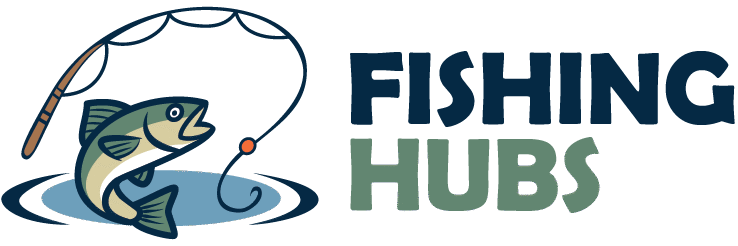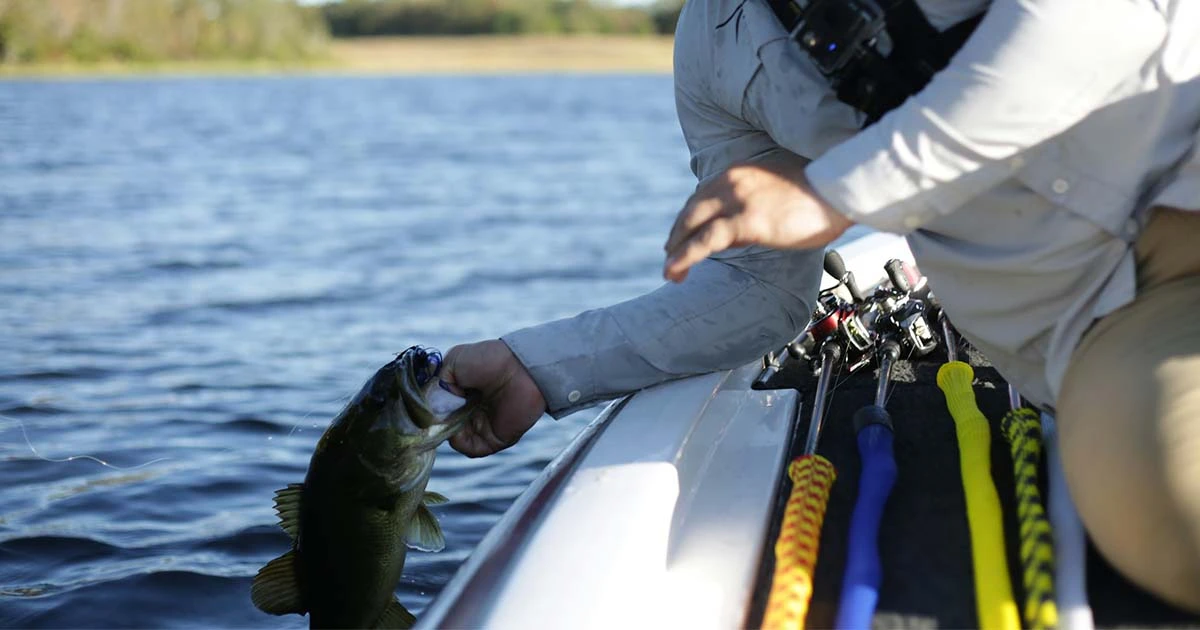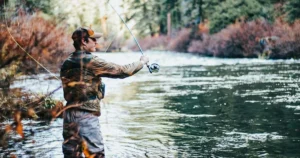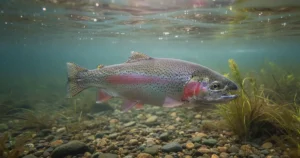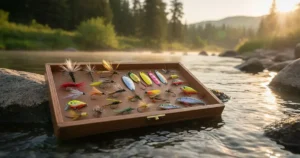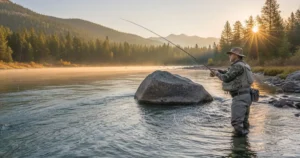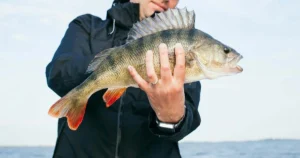Bass Fishing How-To: A Beginner’s Step-by-Step Guide
Table of Contents
Welcome, aspiring angler! If you’ve ever dreamt of the thrill of a bass striking your lure, the fight, and the satisfaction of reeling in a beautiful catch, you’re in the right place. This comprehensive bass fishing how-to guide is designed specifically for you, the beginner, providing all the essential knowledge to get you started on your journey to becoming a successful bass angler. We’ll cover everything from understanding bass behavior to choosing the right gear and mastering basic techniques.
Understanding Your Quarry: The Mighty Bass
Before you even cast a line, it’s crucial to understand a bit about the fish you’re targeting. Largemouth bass, smallmouth bass, and spotted bass are the most common species sought after by anglers in the United States. While they share similarities, knowing their general preferences will significantly improve your chances of success.
Where Do Bass Live?
Bass are adaptable creatures, but they generally prefer certain types of habitats. You’ll often find them in:
- Shallow water: Especially during warmer months, bass will move into shallower areas to feed and spawn. Look for cover like lily pads, submerged grass, and fallen trees.
- Structure: Bass love to relate to structure, whether it’s natural or artificial. This includes rock piles, ledges, brush piles, docks, and submerged timber. These areas provide ambush points and protection.
- Cover: Anything that provides shade or a place to hide is considered cover. This could be thick vegetation, overhanging trees, or even man-made structures like bridges.
When Are Bass Most Active?
Understanding bass activity patterns is a key aspect of bass fishing how to. Bass are most active during specific times of the day and year:
- Dawn and Dusk: These are often prime times for bass fishing. The lower light levels make bass feel more secure to feed in open water.
- Overcast Days: Cloudy days can also be excellent, as the diffused light encourages bass to be more active throughout the day.
- Spring and Fall: These seasons offer some of the best bass fishing opportunities. In spring, bass move to shallow water to spawn, making them more accessible. In fall, they are actively feeding to prepare for winter.
Essential Gear for the Aspiring Bass Angler
Don’t be intimidated by the vast array of fishing tackle out there. For a beginner, a basic setup will get you started effectively.
Rod and Reel Selection
Your rod and reel are your primary tools. For bass fishing how to, we recommend:
- Medium to Medium-Heavy Action Rod: This provides the versatility you need for various lures and techniques. A 6’6″ to 7′ spinning or baitcasting rod is a good starting point.
- Spinning Reel (Beginner-Friendly): Spinning reels are generally easier to learn for beginners, especially for lighter lures. Look for a 2500 or 3000 size.
- Baitcasting Reel (Advanced but Effective): Once you’re comfortable, a baitcasting reel offers greater casting accuracy and power, particularly for heavier lures and denser cover.
Fishing Line
The type of fishing line you choose can impact your success.
- Monofilament: A good all-around choice for beginners. It’s affordable, has good knot strength, and offers some stretch, which can be forgiving.
- Fluorocarbon: Less visible in water and offers good sensitivity. It’s a great choice for clear water conditions.
- Braided Line: Extremely strong and sensitive with no stretch. Often used with a fluorocarbon leader for stealth.
Lure Selection: Your Arsenal for Success
This is where the fun begins! While there are countless lures available, focus on a few versatile options to start your bass fishing how to journey.
- Soft Plastics: These are incredibly effective and come in various shapes and sizes.
- Senkos/Stick Baits: Simple to rig and highly effective for subtle presentations.
- Creature Baits: Mimic crawfish and other forage, great for flipping and pitching into cover.
- Worms: Classic and versatile, can be rigged in numerous ways.
- Spinnerbaits: Excellent for covering water quickly and attracting aggressive strikes. The flashing blades and vibrating skirt are irresistible.
- Crankbaits: Designed to dive to specific depths, mimicking baitfish. Different lip designs determine their diving depth and action.
- Jigs: Versatile lures that can be fished in various ways, often mimicking crawfish or baitfish. Great for targeting bass in heavy cover.
- Topwater Lures: The most exciting way to catch bass! These lures float on the surface, creating a commotion that triggers explosive strikes. Examples include poppers, walk-the-dog baits, and frogs.
Essential Terminal Tackle
Don’t forget the small but crucial items:
- Hooks: A variety of sizes and styles (EWG, worm hooks, trebles).
- Weights: Bullet weights, drop-shot weights, and tungsten weights.
- Swivels: To prevent line twist.
- Pliers/Forceps: For hook removal.
- Line Cutters: Sharp scissors or clippers.
Mastering Basic Techniques
Now that you have your gear, let’s delve into some fundamental techniques for how to catch bass.
Casting Fundamentals
Accuracy is key in bass fishing. Practice makes perfect!
- Overhead Cast: The most common and versatile cast.
- Pitching and Flipping: Essential for targeting bass in tight cover with minimal splash.
- Roll Cast: Useful when you have limited back-casting room.
Retrieving Your Lure
How you retrieve your lure is just as important as where you cast it.
- Steady Retrieve: A consistent retrieve speed for lures like spinnerbaits and crankbaits.
- Stop-and-Go: Retrieve for a few feet, then pause. This often triggers strikes as the lure appears wounded.
- Twitching and Jerking: For topwater lures and jerkbaits, mimicking erratic baitfish.
- Dragging and Hopping: For bottom-contact lures like jigs and worms, imitating crawfish or bottom-dwelling creatures.
Shore Fishing: Your Starting Point
Many beginners start with shore fishing, and it’s a fantastic way to learn the ropes.
- Observe Your Surroundings: Look for points, coves, submerged logs, or overhanging trees that might hold bass.
- Fan Casting: Cast your lure in a fan-like pattern to cover a wider area from your position.
- Work the Edges: Bass often cruise along the edges of weed lines, docks, or shoreline drop-offs.
- Be Patient: Shore fishing can require more patience, as you’re limited in your movement, but it can be incredibly rewarding.
Advanced Tips and Strategies
Once you’ve mastered the basics, consider these tips to elevate your fishing tips for bass fishing.
Understanding Water Conditions
- Water Clarity: In clear water, use more natural colors and smaller lures. In stained or muddy water, opt for brighter colors and lures that create more vibration.
- Water Temperature: Bass are cold-blooded, so their activity is highly influenced by temperature. Learn the ideal temperature ranges for different bass behaviors (spawning, feeding).
- Current: If fishing in rivers or areas with current, bass will often position themselves facing upstream, waiting for food to drift by. Cast upstream and let your lure drift naturally.
Reading the Water
This is an art that comes with experience, but here are some things to look for:
- Baitfish Activity: If you see schools of baitfish jumping or dimpling the surface, bass are likely nearby.
- Bird Activity: Diving birds can indicate baitfish, and thus bass, below.
- Structure and Cover: Always be looking for anything that could hold a bass, from submerged rocks to lily pads.
- Changes in Depth: Subtle changes in depth can be significant. Bass often relate to ledges and drop-offs.
Targeting Bass on a Lake
When it comes to bass fishing on a lake, you have more options for exploration.
- Utilize a Boat or Kayak: This allows you to access more areas and explore different types of structure.
- Use Sonar/Fish Finders: These tools can help you locate submerged structure, baitfish, and even individual fish.
- Focus on Main Lake Points: These are often feeding highways for bass, especially during migration periods.
- Explore Coves and Creek Arms: These areas can warm up faster in the spring and offer protection in windy conditions.
- Understand Seasonal Patterns: Bass behave differently throughout the year. Learn about the “pre-spawn,” “spawn,” “post-spawn,” and “fall transition” to predict their movements.
Key Takeaways
- Start Simple: Don’t get overwhelmed by gear. Begin with a basic setup and master fundamental techniques.
- Understand Bass Behavior: Knowing where and when bass are active is crucial.
- Practice Casting and Retrieving: Accuracy and proper lure presentation are vital.
- Observe Your Surroundings: “Reading the water” will help you identify potential bass hotspots.
- Be Patient and Persistent: Fishing requires patience. Don’t get discouraged by slow days.
- Learn from Every Outing: Whether you catch fish or not, every trip offers a learning opportunity.
Frequently Asked Questions (FAQ)
Q1: What is the best time of day for bass fishing?
A1: Generally, dawn and dusk are the most productive times for bass fishing, as lower light conditions encourage bass to feed more actively. Overcast days can also provide good fishing throughout the day.
Q2: What’s the most important piece of gear for a beginner bass angler?
A2: While all gear is important, a versatile medium to medium-heavy action spinning rod and reel combo is arguably the most important for a beginner. It allows you to use a variety of lures and is easier to learn casting with.
Q3: How do I know what lure to use?
A3: Lure selection depends on several factors, including water clarity, water temperature, time of year, and the type of cover you’re fishing. Start with versatile options like soft plastics (worms, Senkos), spinnerbaits, and a basic crankbait. As you gain experience, you’ll learn to match the hatch and choose lures based on specific conditions.
Q4: Is shore fishing effective for bass?
A4: Absolutely! Shore fishing can be very effective, especially if you focus on areas with visible cover or structure such as docks, fallen trees, weed lines, or points. Many large bass are caught from shore every year.
Q5: How can I improve my bass fishing skills faster?
A5: Practice, practice, practice! Spend as much time on the water as you can. Watch fishing videos, read articles, and consider joining a local fishing club. Don’t be afraid to experiment with different techniques and lures. Most importantly, learn from every outing, whether it’s a successful one or not.
Conclusion
Embarking on your bass fishing journey is an exciting adventure. By understanding the fundamentals of bass fishing how to, from selecting the right gear to mastering basic techniques and reading the water, you are well on your way to experiencing the thrill of a successful catch. Remember, patience, persistence, and a willingness to learn are your greatest assets. So grab your rod, head to your nearest lake, and start making those unforgettable bass fishing memories. Good luck, and tight lines!
